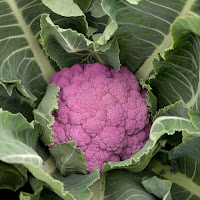
If packs of seeds are kept in ideal conditions then the life expectancy for Carrot seeds is 3 to 5 years. Most seed companies give you the year packed and the sow by date which is normally 2-3 years. Dobies - only give the packed year ending date and I have set a 2 year sow by like most other companies.
Review Of Seed Stocks in Packets Sow By 2021
Amsterdam 3 - 400 seeds - 10p Poundland Carters Tested Seeds - Sow by 7/2021
Autumn King 2 - 400 Seeds - 10p Poundland Carters Tested Seeds - Sow by 7/2021
Charisma F1 - 300 Seeds - Mashalls - Sow by 9/2021
Early Nantes 2 - 500 Seeds - Thompson & Morgan - Sow by 2021
Early Nantes 5 - 400 Seeds - 10p Poundland Carters Tested Seeds - Sow by 7/2021
Nantes 5 - 2000 Seeds - £1.75 - Mr Fothergill's - Sow By 2021
Rondo - 400 Seeds - 10p Poundland Carters Tested Seeds - Sow by 7/2021
Silvano F1 - 500 Seeds - Mashalls - Sow by 9/2021
Review Of Seed Stocks in Packets Sow By 2022
Chartenay Red Cored 3 - 1.300 seeds - Kings Seeds Kitchen Garden - Sow by 9/2022
Paris Market 5 - Atlas - 750 seeds - Kings Seeds Kitchen garden - Sow by 7/2022
Review Of Seed Stocks in Packets Sow By 2024
Snowman F1 - 350 Seeds - £2.59 - D.T.Brown - Sow by 12/2024
Review Of Seed Stocks in Packets Sow By 2025
Autumn King 2 - 1100 Seeds - £1.99 - Suttons - Packed Year Ending 2021 Ibiza F1 - 400 Seeds - £2.99 - Dobies - Packed Year Ending 2021 Mercurio F1 - 300 Seeds - £2.99 - Dobies - Packed Year Ending 2021 Mercurio F1 - 500 Seeds - £2.69 - D.T.Brown - Packed Year Ending 2022 Nerac F1 - 350 Seeds - £2.55 - Mr Fothergill's - Packed Year ending 2022
Alphabetical Listing of Carrots I have grown
Sowing Harvest
Amsterdam 2 (Solo) - Jan – July Apr - Oct
Amsterdam 3 - Jan – July Apr - Oct
Autumn King 2 - Mar – Jul Jun - Nov
Cascade F1 - Feb – Jul Jun - Nov
Charisma F1 - Mar - Aug Jul - Oct
Chartenay Red Cored - Mar – Jun May – Oct
Chartenay Red Cored 3 - Apr – July Jun – Nov
Early Scarlet Horn - Feb – Jun May - Sep
Early Nantes 2 - Jan – July Jul - Dec
Early Nantes 2 Frubund - Feb – Oct Apr - Nov
Early Nantes 5 - Mar – Jul May – Oct
Flyaway - May – Jun Aug - Oct
Ibiza F1 - Mar - Jun Jun - Oct
Jitka F1 - Mar – Jul Jun - Nov
Mercurio F1 - Feb - April Jun - Sept
Nandor F1* - Mar – Jul Jun - Oct
Nairobi - Jan – Jun Jul - Nov
Nantes 2 – Frubund - Feb – Oct Apr - Nov
Nantes 5 - Mar – Jul May - Oct
Nerac F1 - Mar – Jul Jun - Dec
Nigel F1 Hybrid - Mar – Jun Jul - Dec
Paris Market - Atlas* - Mar – July Jun - Oct
Rainbow - Apr – Jun Jul - Oct - Thompson & Morgan
Rainbow Mix - Mar – Jun Jun – Sep - Marshalls
Romance F1 Feb – May Jun - Sep
Rondo
Royal Chantenay 3 - Mar – Jun Jun – Oct
Silvano F1 - Apr – May Sep - Mar
Snowman F1 - Mar - Aug Jun - Oct
St Valery - Mar – Jul Jun – Nov
Sugarsnaps 54 F1 - Mar – Jul Jun - Nov - Mr Fothergills
Sugarsnaps 54 F1 - Apr – Jun Aug - Mar - Unwins
* Short ideal for starting in loo rolls
Sow Date Listing for Varieties that have historically been in My Seed Box
Sowing
Amsterdam 2 (Solo) - Jan
Amsterdam 3 - Jan
Early Nantes 2 -Jan
Early Nantes 2 Frubund - Feb
Romance F1 - Feb
Mercurio F1 - Feb
Autumn King 2 - Mar
Chartenay Red Cored - Mar
Early Nantes 5 - Mar
Ibiza F1 - Mar
Jitka F1 - Mar
Nandor F1 - Mar
Nerac F1 - Mar
Nigel F1 Hybrid - Mar
Paris Market – Atlas - Mar
Rainbow Mix - Mar - Marshalls
Royal Chantenay 3 - Mar
Snowman F1 - Mar
St Valery - Mar
Sugarsnaps 54 F1 - Mar
Rainbow - Apr - Thompson & Morgan
Sugarsnaps 54 F1 - Apr
Chartenay Red Cored 3 - Apr - kings Seeds
Flyaway - May
Germination 10 - 21 days
Rows 250 - 300 apart
An interesting thread re the different sowing times for Sugarsnaps 54 F1 and Varieties that will over winter on the Grow Your Own Grapevine Carrot Confusion
Other cold tolerant varieties are Eskimo (T&M) and Marion (Marshalls),





























